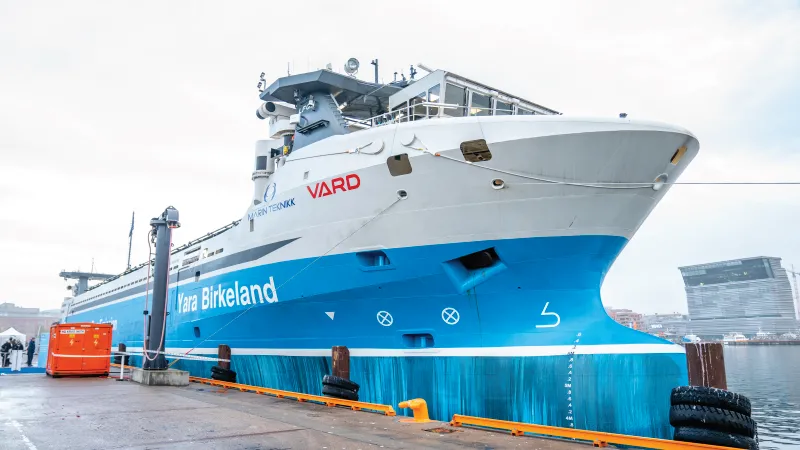How to Lower Transportation-Sector Emissions
The ways we move around the world are making it hotter. Electric vehicles and other innovations offer climate change solutions.
Hop into a car, hit the gas, and off you go—seems simple, right? Well, not quite. Every time a gas-powered vehicle is started, its internal combustion engine burns gasoline for energy and emits greenhouse gas into the atmosphere.
Whether it's cars, trains, ships, or planes, the machines that move people and products from where they are to where they’re going produce a large and growing share of global emissions.
Transportation accounts for roughly 15 percent of the world’s annual emissions.
As people around the world get richer, they’re more able to afford vehicles. In turn, emissions from the sector have risen steadily. Over the last decade, transportation emissions rose by 2 percent per year. That puts the sector on pace to nearly double its emissions by mid-century.
Different countries have different levels of responsibility for driving those emissions. In the United States, transportation is responsible for 29 percent of U.S. emissions. The picture is similar in other wealthy countries: transportation accounts for 26 percent of the United Kingdom’s emissions, and nearly 20 percent of Japan’s. In developing countries, the picture is different. For example, Nigeria’s transport sector accounts for just 10 percent of the country’s emissions.
To meet the current global goals, the Intergovernmental Panel on Climate Change (IPCC) estimates [PDF] transportation-related emissions will have to fall by 59 percent by 2050, relative to 2020 levels. That is especially the case in wealthy countries. Reducing transportation emissions—and minimizing their future rise in developing countries—will demand a range of solutions across several different modes of transit.
This resource will explore the different opportunities for cars, heavy trucks, ships, and airplanes.
How to drive down transportation emissions
Road vehicles account for most global transportation emissions.
More than one billion cars, SUVs, and light trucks operate in the world today, and nearly all of them run on fossil fuels. Those vehicles are powered by internal combustion engines. They burn gasoline or diesel (made from oil), releasing greenhouse gases. But a more climate-friendly alternative exists.
Electric vehicles (EVs) replace the internal combustion engine with a motor powered by a lithium-ion battery. It’s similar to the batteries that power cell phones and laptops, but much bigger. Those batteries don’t run on fossil fuels, so they don’t necessarily emit greenhouse gases by operating.
Of course, the electricity that powers them has to come from somewhere. Much of the electricity that powers EVs comes from fossil fuels, so they still cause indirect greenhouse gas emissions. However, at least in the United States, the emissions from generating electricity for an EV are nearly 80 percent lower than the emissions from an average gasoline-powered vehicle.
Demand for EVs over the past decade has exploded. In 2016, global sales of EVs totaled just seven hundred thousand. In 2023, nearly fourteen million people bought an electric car, accounting for 14 percent of all cars sold that year. The United States and Europe are among the world’s bigger EV markets, but China is the global leader. China accounted for nearly 60 percent of the world’s electric vehicle markets; it also already owns more than half the world’s total electric vehicle fleet.
Still, there’s more that governments can do to put the pedal to the metal on lowering emissions via EVs:
- Greener grid: If governments replace more fossil fuel power plants with renewable energy sources, then producing the electricity for EVs will result in lower emissions.
- Subsidies: Governments can provide funding to make it more affordable for consumers to buy EVs and for producers to build and develop better models.
- Infrastructure: Governments can support the expansion of charging infrastructure. That would allow EV drivers to charge their vehicles when not at home, and it could help address the range anxiety [PDF] that deters many people from buying EVs.
Even if EV sales continue to boom, according to the International Energy Agency, 80 percent of cars and light trucks in the world will still have internal combustion engines (ICEs) in 2030. After all, most people do not buy a new vehicle every year, or even every five years. In the United States, for example, the average age of a car in 2022 was just over thirteen years, and the average truck was over eleven. If about 15 percent of all vehicles sold in 2022 were EVs, that means about 85 percent of vehicles sold were ICEs. All those cars are still likely to be on the road over a decade from now. So, reducing emissions from those vehicles is a crucial component of reducing overall transportation emissions.
- Fuel efficiency: Governments can issue rules and raise standards for how efficiently new vehicles use fuel. That would force manufacturers to design cars that could travel farther on the same amount of gasoline, reducing their emissions. Governments also have tools to encourage consumers to choose smaller and more eco-friendly vehicles. That includes hybrid vehicles, which can alternate between using an electric battery and ICE for power.
- Biofuels: Governments can encourage the full replacement or blending of gasoline with ICE-compatible alternative fuels made from biomass (which, on net, do not result in increased greenhouse gas emissions).
- Alternative modes: Governments can reduce emissions from ICEs by redesigning cities to encourage people to walk, bike, or take public transportation. Regardless of whether they run on clean electricity, buses and trains can result in lower per-rider emissions than most cars. So, expanding opportunities for people to ditch their cars and ride public transit offers an effective route for mitigating transportation emissions.
Even though ICE vehicles are expected to be on the road for some time, policymakers are working to eventually phase them out. Since the twenty-sixth Conference of the Parties in 2021, more than thirty countries have signed on to the Zero Emission Vehicles Declaration, vowing to phase out all ICE vehicles by 2040. Although the United States didn’t sign the agreement, U.S. manufacturers Ford and General Motors did, adopting the goal of only selling fully electric vehicles by 2035.
There are relatively clear paths forward on how to reduce emissions from cars, but other modes of transportation pose big challenges.
Why haven’t electric trucks, ships, and planes taken off?
Electrifying heavier modes of transportation has its challenges.
Electric trucks are increasingly being adopted, with major companies ordering tens of thousands of new vehicles each year. However, most trucks in the United States still rely on gas and diesel. That is partly due to limitations on the number of new electric trucks available and the costs involved in acquiring new vehicles. But adoption is being held back in part by some other issues as well, particularly when it comes to long-haul trucking. Electric trucks have a shorter range than ICE semis do, and electric trucks take much longer to recharge (hours) compared to standard trucks refilling (minutes). Additionally, trucks have weight limitations, so heavy electric batteries could force them to carry fewer goods, reducing profitability.
Electric-powered ships are on the rise—particularly for shorter routes closer to shore, where batteries can be switched out and recharged. But the vast majority still run on fossil fuels. Electrifying large ships with long, international routes is particularly challenging because there aren’t convenient places to recharge or replace a battery in the middle of the ocean.
In aviation, the problem is more straightforward. The powerful batteries needed to run normal planes would make them too heavy to get off the ground.
Nevertheless, improved fuel efficiency in newer models has reduced emissions significantly in trucking, shipping, and aviation. The IPCC suggests that alternative fuels like advanced biofuels and hydrogen—which would be much lighter than batteries—offer promising emissions-reducing opportunities. However, producing those fuels using clean energy is expensive, so more research and development is required to make them economically viable.
Nuclear power offers another potential pathway for greener shipping. For over sixty years, many military vessels have relied on zero-emission nuclear reactors to sail the oceans. The U.S. Department of Energy is looking into ways to expand that technology to the private sector. However, more research and development, as well as regulatory reforms, would be needed before the world’s cargo ships go nuclear.
In the meantime, there’s international support for reducing emissions from shipping and aviation. The International Civil Aviation Organization’s members agreed to a goal of having net-zero CO2 emissions from aviation by 2050. And the International Maritime Organization adopted the goal of reducing maritime shipping emissions to net zero by around 2050. Both organizations aim to help incorporate greener technology and standards to reduce the transportation sector’s contribution to climate change.





